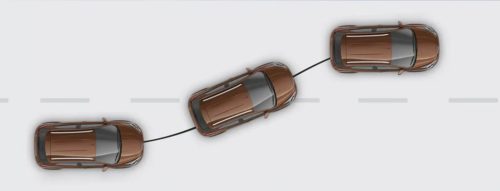Do You Know When To Brake? Learn The Science And Art Of Braking
On the face of things, braking seems simple enough. If you want to slow down or stop, you step on the brake pedal – and voila! Modern automotive technology makes braking look very straightforward, but it’s a complex application of several principles of physics. Braking induces all sorts of forces on the tyres and suspension that have very real implications for the handling and movement of the car.
Braking well is a science and an art. Here is a primer put together to help you take your braking game to a whole new level.
Judging The Braking Distance

Braking distance is an important metric; how far your car travels before coming to a complete stop can make a big difference in potentially hazardous situations. The braking distance depends on several factors – the quality and condition of the tyres, condition of road surface, the weight of the car and its occupants – but is most closely related to the speed of the car when the brakes are applied.
Simply put, braking distance is the time that it takes to bring a moving car to a complete stop. This includes two parts to it – the time it takes the driver to react; and the time it takes for the brakes to stop the car. The braking distance varies depending on factors like the weather and your driving speed. The braking speed increases the faster you drive and the wetter the road is. It also takes time to process what’s happening before you start braking. A car’s braking distance is proportional to the square of its speed before braking, which is why even small increments in this speed can have large effects on the braking distance. Understanding the concept of braking distance is crucial for honing the art of braking.
Don’t Be A Leadfoot!

An experienced driver rarely ever slams the brakes or springs their foot off the pedal. A real pro uses the brake pedal slowly and gently. In regular driving, gentle application of the brakes allows better control over the vehicle while minimising wear and tear on its components. Practice defensive driving; this will help you anticipate road conditions and start shedding speed without needing to brake excessively. Similarly, when you do stop, don’t take your foot off the brake in a snap movement. This causes the ‘taxi stop’ where you jerk forward and then back in your seat. You want to execute a ‘limo stop’, where you come to a halt almost imperceptibly.
The Wonder Of ABS

An anti-lock braking system (ABS) is one of the greatest advancements in automotive safety systems. It’s designed to offer powerful braking without compromising on the vehicle’s maneuverability. Your vehicle’s ABS kicks in under hard braking, and it pulses the brakes (on and off) rapidly. This prevents the wheels from locking up and sliding while still providing powerful braking force. ABS is offered on all modern cars – all Ford vehicles come with ABS as a standard safety kit – thus mitigating accidents caused by skidding. If you press your brake hard in an emergency and feel the pedal pulsing under your foot, don’t worry. That’s the ABS kicking in, which can only be a good thing. Modern ABS systems are clever enough to adapt to different terrains too.
Engine Braking

Brakes are extremely useful pieces of kit, but there are times when you might want to use them sparingly, such as while going downhill, especially with heavy loads. Constantly applying the brakes on long downhill stretches can wear them out or overheat them, both of which can lead to brake fade – and in extreme cases, brake failure. In such conditions, you should employ engine braking by shifting to a lower gear. The advantage of this is that the engine keeps spinning even as it restricts the speed of the car. Engine braking is used in manual vehicles, but some automatic gearboxes do have the feature.
Mastering Cornering

How do you brake while cornering? Pro drivers use several elegant techniques, most of which are unsuitable for everyday drivers. For regular driving, you want to shed as much speed as possible before entering the corner and then gently accelerating through the corner on your way out. Harshly applying brakes midway can throw your car’s handling off. However, if you were driving a Ford you would know that all Fords offer great ride and handling. A case in point being the Ford Freestyle. The ARP (Active Rollover Prevention) technology gives the Ford Freestyle greater control over sudden lane changes and U-turns. By restraining the physical tendency of the car to roll over, ARP ensures your safety when you take on the road across all curves and corners.
This quick primer should help you use your car’s braking system in the safest, most sustainable way. Good braking requires the driver to be gentle, attentive, and anticipatory. By doing this, you can ensure a safer drive, with minimal wear and tear on your car’s components.
Subscribe to our newsletter
Subscribe to our newsletter to stay upto date with latest news, offers and much more



